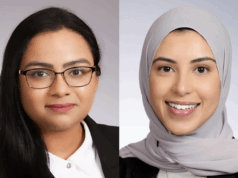Available research evidence supports the use of deep brain stimulation for patients with obsessive-compulsive disorder (OCD) who do not respond to other treatments, concludes a review in the October issue of Neurosurgery, official journal of the Congress of Neurological Surgeons (CNS).
Based on evidence, two specific bilateral deep brain stimulation techniques are recommended for treatment of carefully selected patients with OCD, according to a new clinical practice guideline endorsed by the CNS and the American Association of Neurological Surgeons. While calling for further research in key areas, Clement Hamani of Toronto Western Hospital and co-authors emphasise that patients with OCD symptoms that do not respond to other treatments should continue to have access to deep brain stimulation.
Hamani led a multispecialty expert group in performing a systematic review of research on the effectiveness of deep brain stimulation for OCD. Deep brain stimulation—placement of electrodes in specific areas of the brain, followed by electrical stimulation of those areas—has become an important treatment for patients with Parkinson’s disease and other movement disorders.
Although many patients with OCD respond well to medications and/or psychotherapy, 40 to 60% continue to experience symptoms despite treatment. Over the past decade, a growing number of reports have suggested that deep brain stimulation may be an effective alternative in these “medically refractory” cases.
Hamani and colleagues were tasked with analysing the supporting evidence and developing an initial clinical practice guideline for the use of deep brain stimulation for patients with OCD. The review and guideline development process was sponsored by the American Society of Stereotactic and Functional Neurosurgery and the CNS. Out of more than 350 papers, the reviewers identified seven high-quality studies evaluating deep brain stimulation for OCD.
Based on that evidence, they conclude that bilateral stimulation (on both sides of the brain) of two brain “targets”—areas called the subthalamic nucleus and the nucleus accumbens—can be regarded as effective treatments for OCD. In controlled clinical trials, both techniques improved OCD symptoms by around 30% on a standard rating scale.
That evidence forms the basis for a clinical guideline stating that bilateral deep brain stimulation is a “reasonable therapeutic option” for patients with severe OCD that does not respond to other treatments. The guideline also notes that there is “insufficient evidence” supporting the use of any type of unilateral deep brain stimulation target (one side of the brain) for OCD.
The review highlights the difficulties of studying the effectiveness of deep brain stimulation for OCD—because most patients respond to medical treatment, studies of this highly specialised treatment typically include only small numbers of patients. Hamani and co-authors identify some priorities for future research: particularly to identify the most effective brain targets and the subgroups of patients most likely to benefit.
Despite the limited evidence base, deep brain stimulation therapy for OCD has been approved by the Food and Drug Administration under a humanitarian device exemption. Hamani and co-authors note that various safeguards are in place to ensure appropriate use, and prevent overuse, of deep brain stimulation for OCD.
While research continues, they believe that functional neurosurgeons should continue to work with other specialists to ensure that patients with severe, medically refractory OCD continue to have access to potentially beneficial deep brain stimulation therapy.












